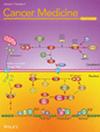摘要
背景 接种人乳头瘤病毒(HPV)疫苗是预防不同性别人群HPV相关疾病的一种经济有效的策略。然而,HPV 疫苗尚未被批准用于中国大陆男性,而且中国大陆男性 HPV 的全面流行病学情况也很有限。 方法 本研究旨在通过研究 2012 年 1 月至 2024 年 9 月期间中国男性的 HPV 感染数据来填补这一空白。研究人员对四个英文数据库(Web of Science、Embase、Medline 和 Cochrane Library)和四个中文数据库(CNKI、VIP、万方和 SinoMed)进行了系统回顾。随机效应模型评估了汇总的 HPV 感染率,并根据人群(门诊患者与健康体检者)进行了亚组分析。计算了基因型特异性 HPV 阳性率。 结果 共纳入 296 项研究,包括 199,233 名门诊患者和 16,452 次体检。门诊患者的 HPV 感染率为 52.45%,最常见的亚型为 HPV 6(19.06%)、11(13.71%)和 16(8.29%)。在健康体检者中,HPV 感染率为 7.89%,感染率最高的亚型是 HPV 16(3.66%)、52(1.37%)和 58(1.19%)。在确诊为癌症的男性患者中,HPV 16(18.50%)和 18(5.33%)是最常见的亚型,而在 HIV 阳性的 MSM 群体中,HPV 感染率为 82.11%。 结论 HPV 在中国男性中的高流行率,尤其是在门诊患者和 HIV 阳性 MSM 群体中的高流行率,凸显了采取有针对性的预防策略的迫切需要。本分析中发现的常见亚型突显了向中国男性引入 HPV 预防性疫苗的潜在益处,这将显著减轻整个人群中 HPV 相关疾病的负担。

Background
Human papillomavirus (HPV) vaccination represents a cost-effective strategy for preventing HPV-related diseases across genders. However, the HPV vaccine has not been approved for mainland Chinese males, and the comprehensive epidemiological landscape of HPV among Chinese males from mainland China is limited.
Methods
This study aimed to address this gap by examining HPV infection data in Chinese males from January 2012 to September 2024. Four English databases (Web of Science, Embase, Medline, and Cochrane Library) and four Chinese databases (CNKI, VIP, Wanfang, and SinoMed) were systematically reviewed. Random effect models assessed pooled HPV prevalence, and subgroup analyses were conducted based on population (outpatients vs. health checkups). Genotype-specific HPV positivity was calculated.
Results
A total of 296 studies were included, encompassing 199,233 outpatients and 16,452 health checkups. HPV prevalence was 52.45% among outpatients, with the most prevalent subtypes being HPV 6 (19.06%), 11 (13.71%), and 16 (8.29%). Among health checkups, HPV prevalence was 7.89%, with the highest prevalence subtypes being HPV 16 (3.66%), 52 (1.37%), and 58 (1.19%). Among male patients diagnosed with cancer, HPV 16 (18.50%) and 18 (5.33%) were the most common subtypes, and HPV prevalence was 82.11% among the HIV-positive MSM population.
Conclusion
The high prevalence of HPV among Chinese males, particularly among outpatients and the HIV-positive MSM population, underscores the urgent need for targeted prevention strategies. The common subtypes identified in this analysis highlight the potential benefits of introducing HPV prophylactic vaccines to Chinese males, which could significantly reduce the burden of HPV-related diseases across the population.

 求助内容:
求助内容: 应助结果提醒方式:
应助结果提醒方式:


